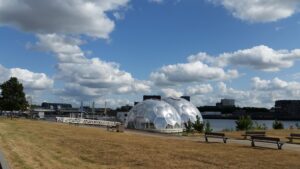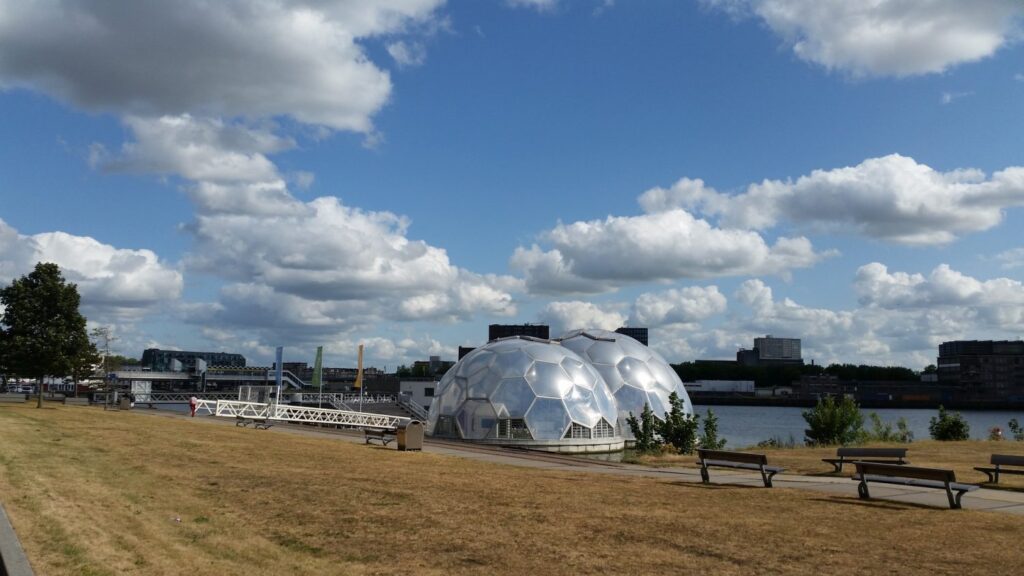If green and sustainable professionals hope to best serve the industry, now is the time to understand the home healthiness issues that need attention in the decades ahead.
Fast forward. The year is 2025, and the green and sustainable homes industry is well into the next stage of its evolutionary development. We’ve made great strides in energy efficiency, reducing our carbon footprint, and cultivating outdoor environmental sustainability. The planet is on the rebound.
In-house systems have become increasingly complicated. When we hand over the keys to the next generation of green and sustainable homes, a new set of needs will arise. The homes will need to be monitored to confirm that new methods, materials, and systems are performing the way we hoped. After all, homeowners will not have read an operator’s manual on how to operate their new homes. They will need to learn how to recognize signs of developing trouble.
The top three things a homeowner in 2025 needs to learn in order to optimize their home’s health—and their own—are:
- How to address humidity and dampness intrusions into the building. Though bulk water intrusion gets a lot of attention, humidity offers an environment favorable to molds, mildew, must and damp rot.
- Indoor environmental control systems, also known as the heating, ventilation, air and circulation (HVAC) system, need to dehumidify, offer balanced indoor-outdoor air exchange, include air filtration and cleaning.
- As the home’s occupants face health issues, professionals in the industry will feel compelled to learn how in-home systems contribute to human wellness. Understandings will emerge about ways occupants do or do not use—or misuse—the house and its systems.

In 2025, the discussions on green and sustainable homes continue to focus primarily on new construction. Let’s estimate that as many as 10 percent of people live in one of these homes. That means the remaining 90 percent of us will continue to live in older, non-green homes, just as we did in the decade before.
Many of these homes already exhibit terrible performance and healthiness issues. To ensure that the vast majority of homeowners in the future can solve these issues, we need to step up our efforts today. We need ways to apply realistic, effective, and affordable green and sustainable measures toward resolving performance and healthiness issues in existing residential buildings.
Of course, homeowners will attempt to resolve the environmental issues of 2025 in their own ways.
One group will prefer the “back to nature” approach to living in their home. They’ll ignore existing in-house systems, turn off the dehumidifier and air conditioner and opt to open the windows. These homeowners should anticipate high humidity and levels of dust, mold, pollen and dust mites—enough to cause respiratory irritation and allergies to flare. They will require guidance on allergy proofing their homes, removing mold-friendly items, clearing clutter, and adjusting their lifestyle preferences if and when their health demands they do so.
A second group of homeowners will retreat into the house, doors and windows closed, completely sealed in. These individuals and their families will rely exclusively on the home’s environmental control systems. This option is a long way from sustainable. A simple power outage would disrupt the mechanisms they need to breathe in oxygen. Instruction on the proper use and maintenance of the home’s systems will increase reliability. Eventually, they will need to upgrade and add to those systems.
When problems occur, both groups will need the guidance of home-healthiness professionals.
As Western North Carolina barrels toward the first quarter mark of the 21st century, we should bear two axioms in mind with respect and awareness to green and sustainable development:
Axiom 1: Nature will relentlessly and eventually undo the best of things man has constructed.
Axiom 2: If there’s a way for humans to mess something up, we will!
Home healthiness in 2025 will result from the abilities of green and sustainable professionals to constantly explore, invent, and experiment to find common sense solutions to scientific problems.
Rick Bayless owns and operates A Healthier Home, LLC, Western North Carolina’s leading environmental home health services provider. Learn more about maintaining a green and healthy home at www.ahealthierhomenc.com or address wellness concerns through systemic intervention with www.envirovention.com.
You can also view this article as it was originally published on page 48 of the 2017-18 edition of the directory.


